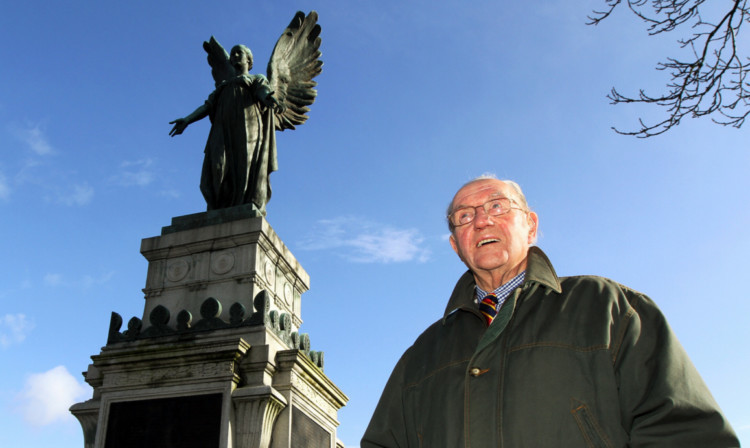News that Cupar War Memorial has been awarded a grant of £17,901 has been welcomed by the man who has spearheaded the local restoration campaign.
Dave Carstairs, a former chairman of Cupar Community Council and a member of the Royal British Legion Cupar Branch, said all the monies raised including this latest instalment will ensure that this local icon will be secured for the next century with a “reinforced commitment to those whose names are inscribed”.
Commenting on the total awards of £63,000 which cover the estimated costs, Mr Carstairs expressed “grateful thanks” to the Scottish Government, Fife Council, War Memorial Trust, Royal Burgh of Cupar Community Council, Cupar Branch of the Royal British Legion (Scotland) and Fife and Forfar Yeomanry Association.
He also paid tribute to individuals and agencies, who by their efforts and support, over time, have contributed to the success of these projects.
He added: “We could not have achieved this without the help of our partners.”
Cupar’s iconic B-listed War Memorial is unique as it consists of a raised concrete plateau giving access to four bronze names plaques, mounted on monument of Kemnay granite, naming the 188 local First World War casualties.
The announcement has also been welcomed by Cupar Fife councillor Margaret Kennedy.
She said: “I am delighted that they have secured this funding, particularly in this anniversary year of the war. It will be fantastic to see Cupar’s War Memorial, which our predecessors felt should be such a significant statement in the town, looking fresh and proud.”
First Minister Alex Salmond announced last week that £103,535 was being awarded to 10 memorial in Scotland. The memorial faces a number of issues.
Exposure to weather and pollution has resulted in a build-up of dirt and biological growth on the stone as well as corrosion of the bronze elements. Joints which have been pointed with cement mortar in the past.
These joints are now cracking or are missing which meant that the ingress of water was degrading the memorial. In addition, past unsightly repair work to the stone boundary wall is starting to fail.
The grant funding will support the cleaning and repair work to the stone and the bronze elements of the memorial.
In addition, existing cement joints will be removed and repointed with a lime mortar and sensitive repair work will be undertaken at the boundary wall.
Repagination of all plaques will be undertaken and the fixings renewed. A conservation architect has been appointed and a contract for the work is now being let.
Work will start around May this year and is scheduled to last four weeks.
